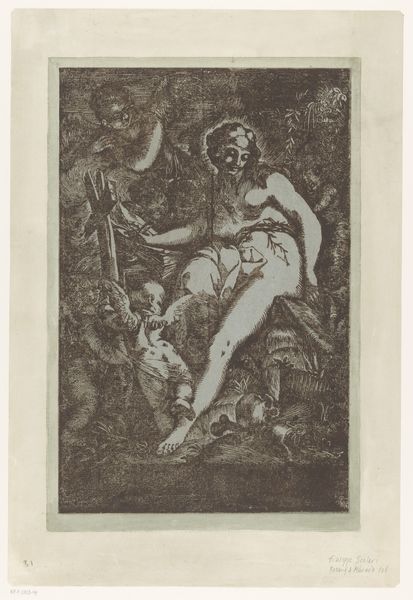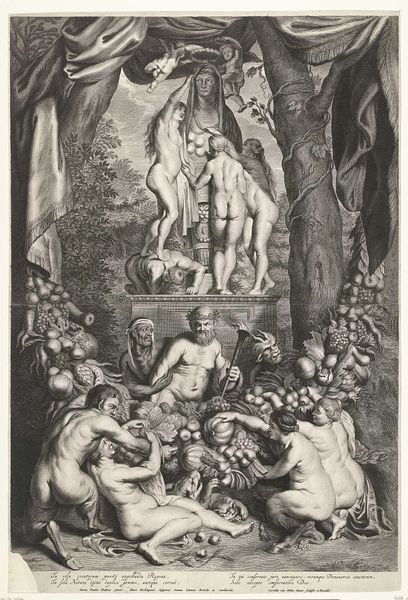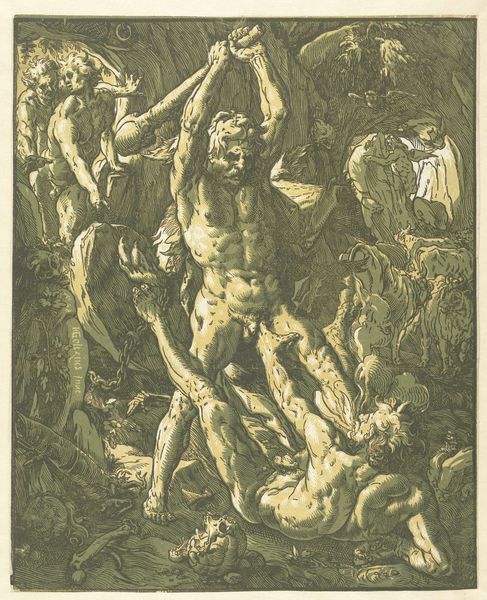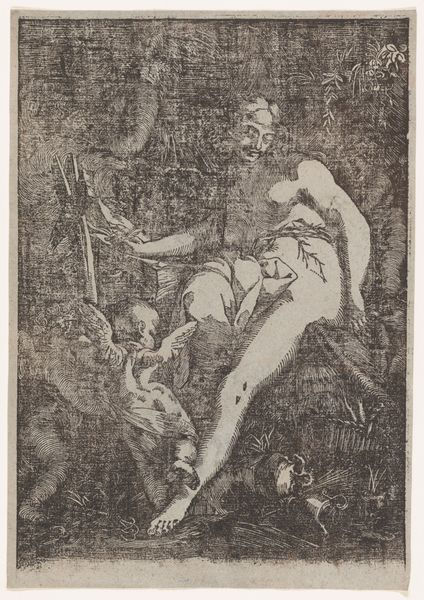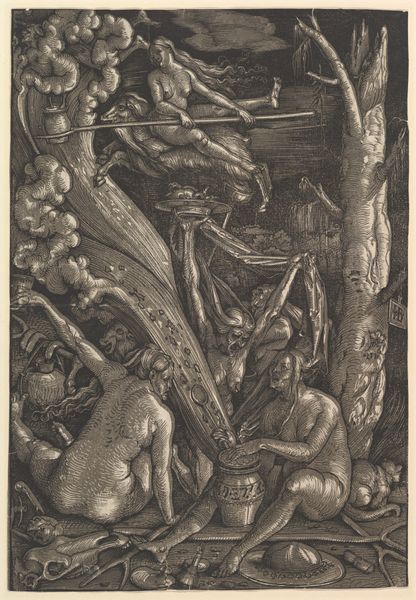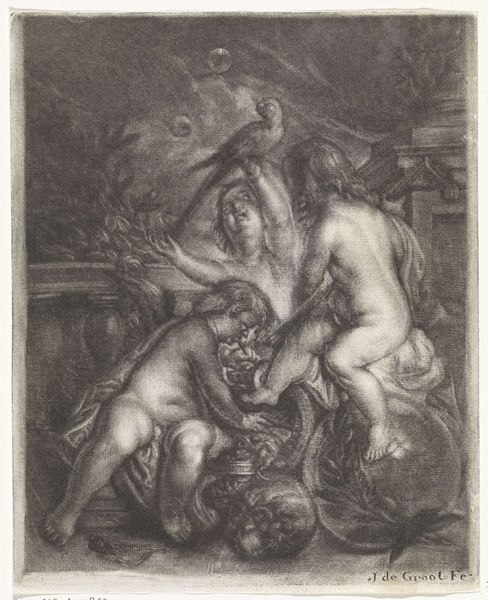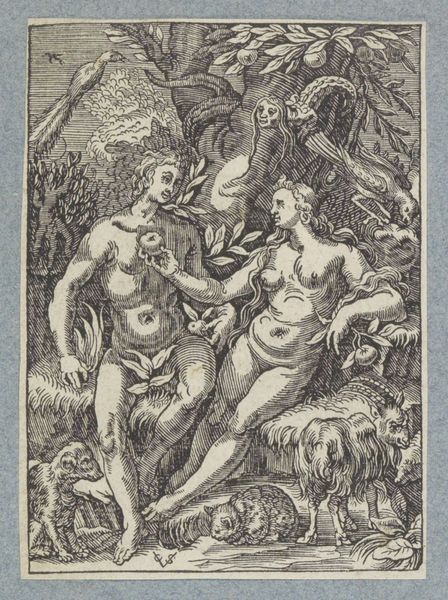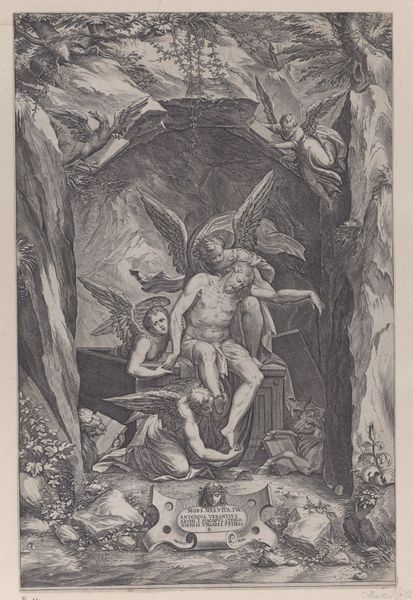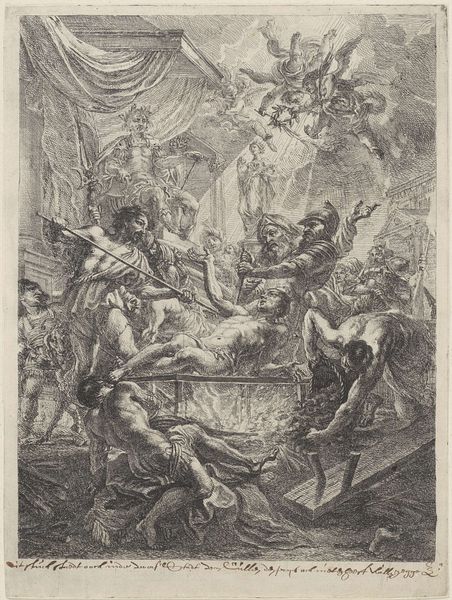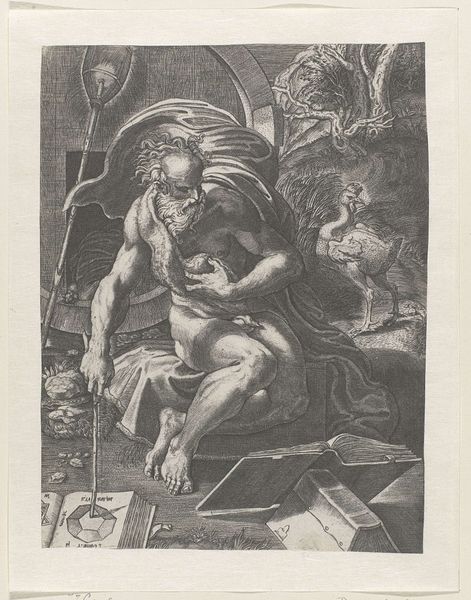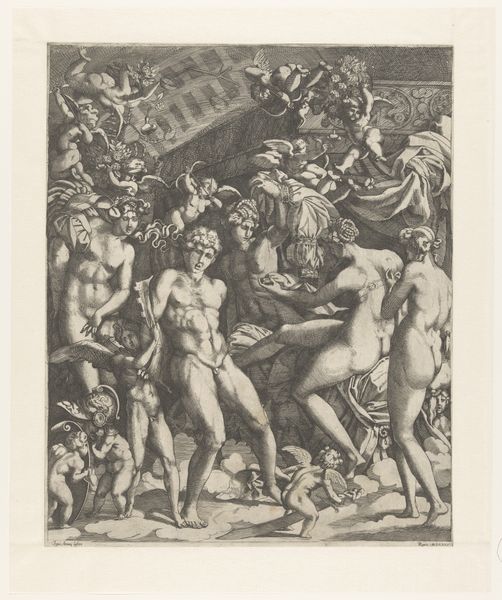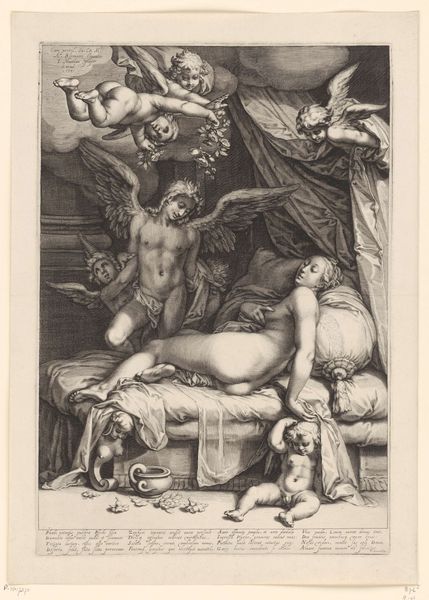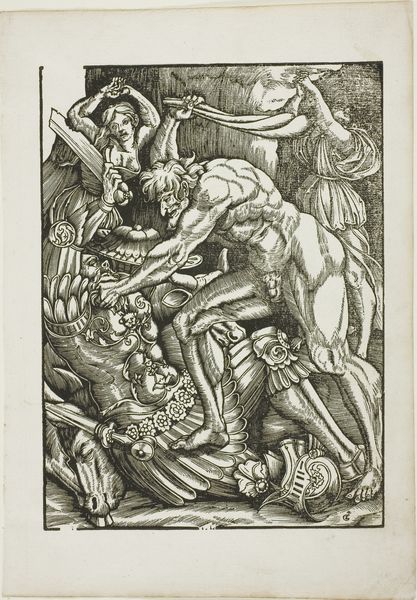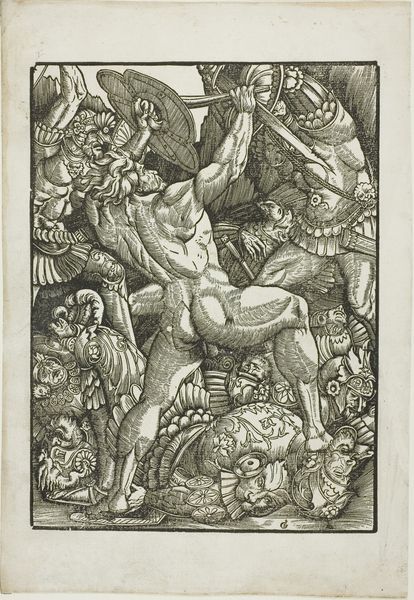
print, etching, engraving
#
baroque
# print
#
etching
#
charcoal drawing
#
figuration
#
history-painting
#
nude
#
engraving
Dimensions: height 289 mm, width 215 mm
Copyright: Rijks Museum: Open Domain
Editor: Here we have "Mars en Venus," an etching and engraving print made around 1683 by Willem de Ryck. It’s quite busy, isn’t it? It strikes me as both powerful and playful with all those little cherubs, despite the dramatic, almost chiaroscuro lighting. What do you make of this piece? Curator: Oh, this piece sings to me of passionate paradoxes! Look at Mars, the god of war, practically melting in Venus's embrace. It's the oldest story in the book, isn’t it, about love conquering all, even war. De Ryck seems to be poking a little fun, maybe saying that even the mightiest warrior is just putty in the hands of love… or a strategically placed goddess. What do you make of the overall composition? Editor: Well, the way everything's crammed together… it's almost claustrophobic! All those figures, and the heavy drapery. Does that cramped composition contribute to that feeling? Curator: Exactly! The artist is a trickster. It's no accident: all the elements of drama create tension between desire and reason, love and conflict. A dance as old as time. Do you see the cherubs playing with Mars' discarded armour? Delicious! A touch of lightness to keep the whole thing from getting too serious. That Cupid with his bow… mischief incarnate! Editor: Oh, that is cheeky! So it’s less of a straightforward depiction, and more of a commentary? Curator: Precisely! De Ryck is winking at us. Baroque art loved theatricality. It reminds me a little of Bernini's sculptures. What a reminder that artists play with archetypes across history to comment on universal truths! Editor: This print has completely transformed how I saw Baroque art: a witty dialogue, rather than mere pomp and circumstance. Thanks for unveiling new ways of looking at art. Curator: The pleasure was all mine! Every work is a universe waiting to be unlocked, I just happen to have the key – or think I do!
Comments
No comments
Be the first to comment and join the conversation on the ultimate creative platform.
